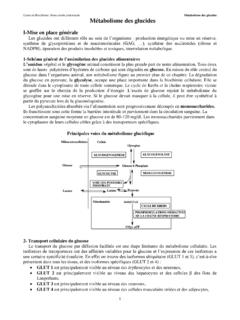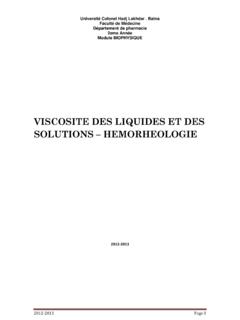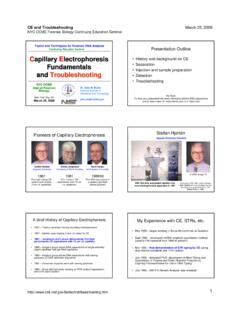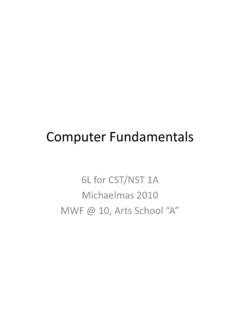Transcription of Fundamental Electrical and Electronic Principles
1 Fundamental Electrical and Electronic Principles This page intentionally left blank Fundamental Electrical and Electronic Principles Third Edition Christopher R Robertson AMSTERDAM BOSTON HEIDELBERG LONDON NEW YORK OXFORD. PARIS SAN DIEGO SAN FRANCISCO SINGAPORE SYDNEY TOKYO. Newnes is an imprint of Elsevier Newnes is an imprint of Elsevier Linacre House, Jordan Hill, Oxford OX2 8DP, UK. 30 Corporate Drive, Suite 400, Burlington, MA 01803, USA. First published 1993 as Electrical and Electronic Principles 1 by Edward Arnold Second edition 2001. Third edition 2008. Copyright C. R. Robertson 1993, 2001. Copyright 2008 Elsevier Ltd. All rights reserved The right of Christopher R. Robertson to be identi ed as the author of this work has been asserted in accordance with the Copyright, Designs and Patents Act 1988. No part of this publication may be reproduced, stored in a retrieval system or transmitted in any form or by any means Electronic , mechanical, photocopying, recording or otherwise without the prior written permission of the publisher Permissions may be sought directly from Elsevier's Science & Technology Rights Department in Oxford, UK: phone ( 44) (0) 1865 843830; fax ( 44) (0).
2 1865 853333; email: Alternatively you can submit your request online by visiting the Elsevier web site at permissions, and selecting Obtaining permission to use Elsevier material Notice No responsibility is assumed by the publisher for any injury and/or damage to persons or property as a matter of products liability, negligence or otherwise, or from any use or operation of any methods, products, instructions or ideas contained in the material herein. British Library Cataloguing in Publication Data A catalogue record for this book is available from the British Library Library of Congress Cataloguing in Publication Data A catalogue record for this book is available from the Library of Congress ISBN: 978-0-7506-8737-9. For information on all Newnes publications visit our web site at Typeset by Charon Tec Ltd., A Macmillan Company. ( ). Printed and bound in Slovenia 08 09 10 11 12 10 9 8 7 6 5 4 3 2 1. Contents 1 Units ..1. Standard Form Scientific' Notation.
3 2. Conversion of Areas and Basic Electrical Concepts ..7. Summary of Equations ..29. Assignment Questions ..30. 2 Circuits .. 31. Resistors in Series ..31. Resistors in Parallel ..35. Potential Divider ..40. Current Divider ..41. Series/Parallel Combinations ..43. Kirchhoff 's Current Law ..48. Kirchhoff 's Voltage Law ..49. The Wheatstone Bridge Network ..55. The Wheatstone Bridge Instrument ..63. The Slidewire Potentiometer ..65. Summary of Equations ..68. Assignment Questions ..69. Suggested Practical Assignments ..72. 3 Electric Fields and Capacitors .. 75. Coulomb's Law ..75. Electric Fields ..76. Electric Field Strength (E) ..78. Electric Flux ( ) and Flux Density (D) ..79. The Charging Process and Potential Gradient ..80. Capacitance (C) ..83. Capacitors ..84. Permittivity of Free Space ( 0) ..84. Relative Permittivity ( r)..84. Absolute Permittivity ( ) ..85. v vi Contents Calculating Capacitor Capacitors in Parallel ..87. Capacitors in Series.
4 89. Series/Parallel Combinations ..92. Multiplate Capacitors ..95. Energy Stored ..97. Dielectric Strength and Working Voltage ..101. Capacitor Types ..102. Summary of Equations ..105. Assignment Questions ..107. Suggested Practical Assignment ..110. 4 Magnetic Fields and Magnetic Magnetic Fields ..111. The Magnetic Circuit ..114. Magnetic Flux and Flux Magnetomotive Force (mmf ) ..116. Magnetic Field Strength ..117. Permeability of Free Space ( 0) ..118. Relative Permeability ( r)..119. Absolute Permeability ( ) ..119. Magnetisation (B/H) Curve ..122. Composite Series Magnetic Circuits ..126. Reluctance (S) ..128. Comparison of Electrical , Magnetic and Electrostatic Quantities ..131. Magnetic Hysteresis ..132. Parallel Magnetic Circuits ..134. Summary of Equations ..135. Assignment Questions ..136. Suggested Practical Assignments ..138. 5 Electromagnetism .. 141. Faraday 's Law of Electromagnetic Lenz 's Fleming's Righthand Rule ..144. EMF Induced in a Single Straight Conductor.
5 147. Force on a Current-Carrying The Motor Principle ..153. Force between Parallel Conductors ..156. The Moving Coil Meter ..158. Shunts and Multipliers ..162. Shunts ..162. Multipliers ..163. Contents vii Figure of Merit and Loading Effect ..166. The Ohmmeter ..170. Wattmeter ..171. Eddy Currents ..172. Self and Mutual Inductance ..174. Self-Inductance ..175. Self-Inductance and Flux Linkages ..176. Factors Affecting Inductance ..179. Mutual Relationship between Self- and Energy Stored ..184. The Transformer Principle ..186. Transformer Voltage and Current Ratios ..188. Summary of Equations ..191. Assignment Questions ..192. Suggested Practical Assignments ..195. 6 Alternating Quantities .. 197. Production of an Alternating Waveform ..197. Angular Velocity and Frequency ..200. Standard Expression for an Alternating Quantity ..200. Average Value ..205. Peak Factor ..206. Form Rectifiers ..208. Half-wave Rectifier ..209. Full-wave Bridge Rectifier.
6 210. Rectifier Moving Coil Meter ..212. Phase and Phase Angle ..213. Phasor Addition of Alternating The Cathode Ray Oscilloscope ..224. Operation of the Oscilloscope ..226. Dual Beam Oscilloscopes ..228. Summary of Equations ..229. Assignment Questions ..230. Suggested Practical Assignments ..232. 7 Machines .. 233. Motor/Generator Duality ..233. The Generation of Construction of Machines .. 238. Classification of Generators ..238. viii Contents Separately Excited Generator ..239. Shunt Generator ..240. Series Generator ..242. D. C. Motors ..244. Shunt Motor ..244. Series Motor ..245. Summary of Equations ..247. Assignment Questions ..248. 8 Transients .. 249. Capacitor-Resistor Series Circuit (Charging) ..249. Capacitor-Resistor Series Circuit (Discharging) ..253. Inductor-Resistor Series Circuit (Connection to Supply) ..256. Inductor-Resistor Series Circuit (Disconnection)..259. Summary of Equations ..260. Assignment Questions ..261. Suggested Practical Assignments.
7 262. 9 Semiconductor Theory and Devices .. 263. Atomic Structure ..263. Intrinsic (Pure) Electron-Hole Pair Generation and Recombination ..266. Conduction in Intrinsic Semiconductors ..267. Extrinsic (Impure) Semiconductors ..268. n-type Semiconductor ..268. p-type Semiconductor ..270. The p-n Junction ..271. The p-n Junction Diode ..272. Forward-biased Diode ..273. Reverse-biased Diode ..273. Diode The Zener Diode ..276. Assignment Questions ..281. Suggested Practical Assignments ..282. Appendix A: SI Units and Quantities ..283. Answers to Assignment Questions ..285. Preface This Textbook supersedes the second edition of Fundamental Electrical and Electronic Principles . In response to comments from colleges requesting that the contents more closely match the objectives of the BTEC unit Electrical and Electronic Principles , some chapters have been removed and some exchanged with the companion book Further Electrical and Electronic Principles , ISBN.
8 9780750687478. Also, in order to encourage students to use other reference sources, those chapters that have been totally removed may be accessed on the website address com/companions/9780750687379. The previous edition included Supplementary Worked Examples at the end of each chapter. The majority of these have now been included within each chapter as Worked Examples, and those that have been removed may be accessed on the above website. This book continues with the philosophy of the previous editions in that it may be used as a complete set of course notes for students undertaking the study of Electrical and Electronic Principles in the rst year of a BTEC National Diploma/Certi cate course. It also provides coverage for some other courses, including foundation/. bridging courses which require the study of Electrical and Electronic Engineering. Fundamental Electrical and Electronic Principles contains 349. illustrations, 112 worked examples, 26 suggested practical assignments and 234 assignment questions.
9 The answers to the latter are to be found towards the end of the book. The order of the chapters does not necessarily follow the order set out in any syllabus, but rather follows a logical step-by-step sequence through the subject matter. Some topic areas may extend beyond current syllabus requirements, but do so both for the sake of completeness and to encourage those students wishing to extend their knowledge. Coverage of the second year BTEC National Diploma/Certi cate unit, Further Electrical Principles , is found in the third edition of the companion book Further Electrical and Electronic Principles . C. Robertson Tonbridge March 2008. ix This page intentionally left blank Introduction The chapters follow a sequence that I consider to be a logical progression through the subject matter, and in the main, follow the order of objectives stated in the BTEC unit of Electrical and Electronic Principles . The major exception to this is that the topics of instrumentation and measurements do not appear in a speci c chapter of that title.
10 Instead, the various instruments and measurement methods are integrated within those chapters where the relevant theory is covered. Occasionally a word or phrase will appear in bold blue type, and close by will be a box with a blue background. These emphasised words or phrases may be ones that are not familiar to students, and within the box will be an explanation of the words used in the text. Throughout the book, Worked Examples appear as Q questions in bold type, followed by A answers. In all chapters, Assignment Questions are provided for students to solve. The rst chapter deals with the basic concepts of electricity; the use of standard form and its adaptation to scienti c notation; SI and derived units; and the plotting of graphs. This chapter is intended to provide a means of ensuring that all students on a given course start with the same background knowledge. Also included in this chapter are notes regarding communication. In particular, emphasis is placed on logical and thorough presentation of information, etc.












